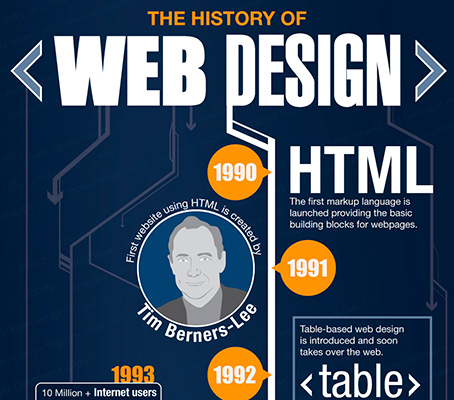Intrigued In Discovering Just How Web Site Layout Has Transformed For Many Years? Check Out The Progression From Standard, Uncomplicated Layouts To User-Centered Methods That Focus On The Requirements And Choices Of On-Line Visitors
Intrigued In Discovering Just How Web Site Layout Has Transformed For Many Years? Check Out The Progression From Standard, Uncomplicated Layouts To User-Centered Methods That Focus On The Requirements And Choices Of On-Line Visitors
Blog Article
Write-Up Author-Lamb Vinson
In the past, web sites were straightforward and concentrated on info. Navigating was direct, and style was for desktop computers. Currently, individual experience is crucial. Data guides styles for simple navigation. relationship to search engine optimization fit different tools. Today, dark mode minimizes strain, and minimalist food selections boost navigating. Interactive attributes engage users, and vibrant visuals stand apart. AI assimilation improves interaction. See just how style has advanced to enhance your on the internet journey.
Very Early Days of Web Design
In the very early days of web design, simplicity reigned supreme. Websites were fundamental, with limited colors, fonts, and designs. The emphasis got on giving information rather than showy visuals. Users accessed the net via slow dial-up links, so speed and capability were vital.
Navigating menus were straightforward, usually situated at the top or side of the web page. Sites were made for computer, as mobile browsing had not been yet common. Content was king, and designers focused on simple readability over complex design aspects.
HTML was the main coding language utilized, and designers had to function within its restraints. Computer animations and interactive attributes were minimal contrasted to today's standards. Internet sites were static, with little vibrant content or tailored customer experiences.
Rise of User-Focused Design
With the evolution of site design, a shift towards user-focused design principles has become significantly noticeable. Today, creating web sites that focus on individual experience is essential for engaging visitors and attaining service goals. User-focused layout entails recognizing the requirements, preferences, and behaviors of your target market to customize the internet site's layout, material, and includes appropriately.
Designers now carry out detailed research study, such as individual studies and usability testing, to collect insights and responses directly from users. This data-driven method assists in creating intuitive navigating, clear calls-to-action, and aesthetically attractive interfaces that reverberate with site visitors. By putting the customer at the facility of the layout process, sites can supply an extra tailored and delightful experience.
Responsive layout has likewise emerged as a key element of user-focused design, ensuring that sites are optimized for different tools and display sizes. This flexibility improves availability and use, satisfying the varied ways individuals interact with sites today. Fundamentally, Read More At this website of user-focused style symbolizes a change in the direction of developing digital experiences that focus on the demands and assumptions of the end customer.
Modern Trends in Website Design
Explore the current patterns shaping website design today. One noticeable trend is dark mode design, using a smooth and modern-day appearance while reducing eye pressure in low-light atmospheres. https://www.finsmes.com/2019/11/5-essential-digital-marketing-strategies-for-business-success.html is minimalist navigation, streamlining food selections and improving customer experience by concentrating on essential elements. Including micro-interactions, such as computer animated switches or scrolling effects, can develop an extra engaging and interactive internet site. Receptive layout remains vital, making sure smooth customer experiences throughout different tools. In addition, utilizing vibrant typography and unbalanced designs can include aesthetic rate of interest and draw attention to details web content.
Incorporating AI innovation, like chatbots for consumer support or customized referrals, improves user involvement and enhances procedures. Availability has additionally become a considerable trend, with developers prioritizing inclusive layout practices to deal with varied individual demands. Accepting sustainability by enhancing website performance for rate and performance is another emerging trend in web design. Teaming up with user responses and data analytics to iterate and enhance layout constantly is vital for staying appropriate in the ever-evolving digital landscape. By accepting these contemporary fads, you can develop a visually appealing, easy to use internet site that resonates with your target market.
Verdict
As you assess the development of web site design from the very early days to currently, you can see just how user-focused design has ended up being the driving pressure behind modern patterns.
Accept the trip of modification and adjustment in web design, constantly maintaining the individual experience at the center.
Stay present with the most up to date patterns and innovations, and never ever quit advancing your approach to create aesthetically spectacular and user-friendly sites.
Develop, adjust, and create - the future of website design is in your hands.
